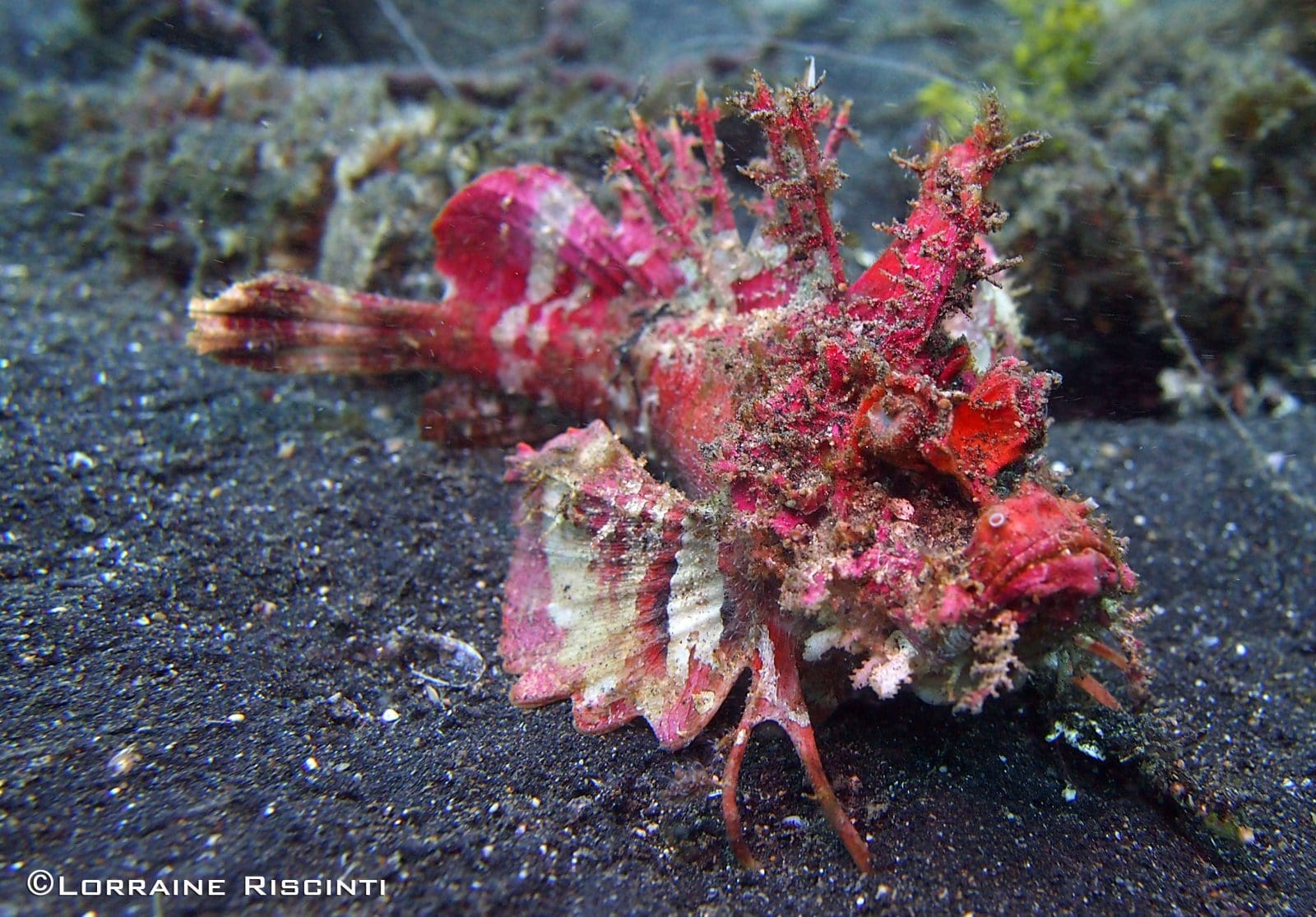The Devilish Charm of Scorpionfish: Dive into the Behavior and Adaptations of this Fascinating Species
The Lembeh Strait is world famous for its abundance of rare and unusual marine life – and one of our favorite critters is the devil scorpionfish. With its deadly arsenal of spines, this elusive predator captivates both divers and marine enthusiasts. In this blog, we will delve into the intriguing world of the devil scorpionfish, exploring its physical characteristics, favored habitats, unique hunting strategies, and this species’ presence in Lembeh.
It’s all in the name
Devil Scorpionfish are officially known in science by the name Scorpaenopsis diabolus. They also have several common names which vary regionally. The most frequently used common names include the false stonefish, false scorpionfish, and, of course, the devil scorpionfish.
Physical Adaptations
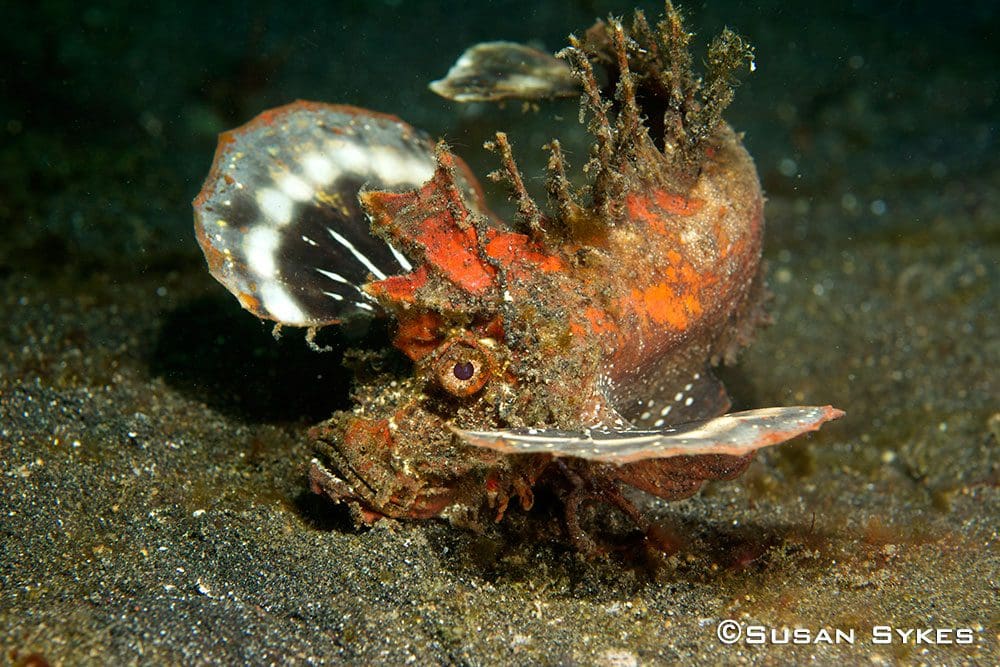
Devil Scorpionfish can grow up to 25 centimeters in length and they are masters of disguise. Their bodies are covered in an array of colors, blending perfectly with the coral reefs and rocky substrates they call home. Ranging from reddish-brown to mottled green and yellow, their skin is adorned with intricate patterns that mimic the surrounding environment. This camouflage allows them to remain virtually invisible to both prey and potential predators – they can literally hide in plain sight here in Lembeh!
What sets the devil scorpionfish apart from other scorpionfish species is their elaborate skin appendages. These appendages, called dermal spinules, protrude from the body, resembling algae or small corals. These ingenious extensions not only enhance their camouflage abilities but also provide protection from potential predators. As well as skin appendages, devil scorpionfish are also equipped with sharp spines along their dorsal fins that have venomous glands that serve as a formidable defense mechanism (see more details below).
Another distinctive physical feature of devil scorpionfish is when they extend their pectoral fins to swim, a bright red, orange and yellow radiating pattern is revealed. This pattern is exceptionally striking as it is in stark contrast to their mottled bodies.
Hunting Strategies
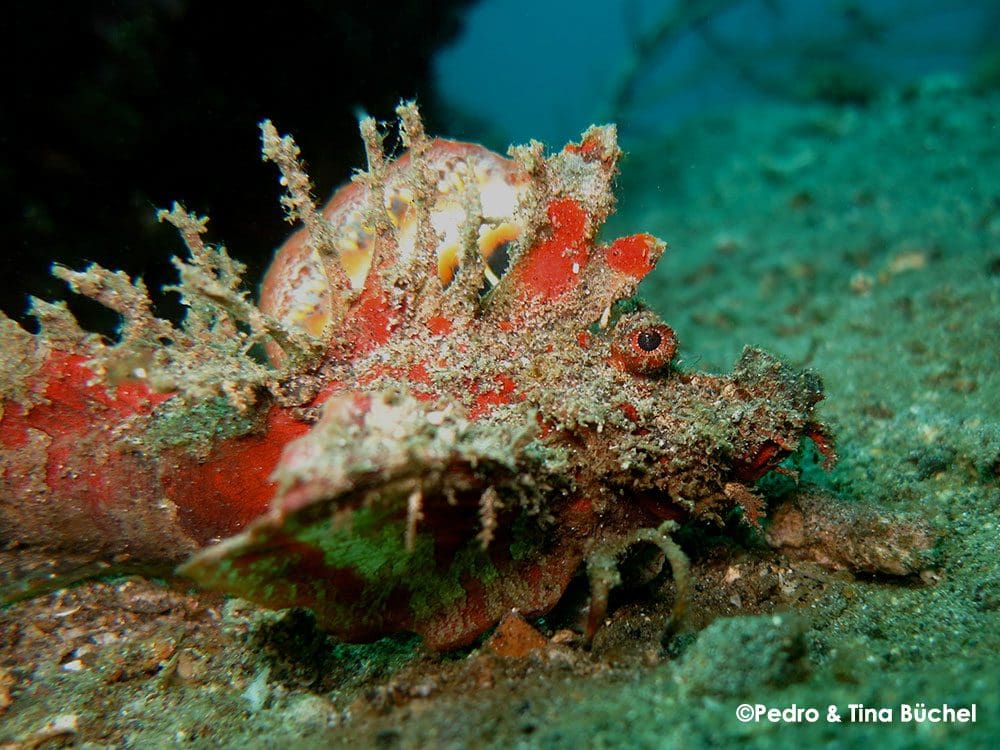
As an ambush predator, the devil scorpionfish employs stealth and patience to secure its meals. Remaining motionless for extended periods, it relies on its impeccable camouflage to blend seamlessly into the surroundings. With a mouth that has large, extendable jaws, the devil scorpionfish can rapidly inhale unsuspecting prey, such as small fish and crustaceans that venture too close. Devil scorpionfish are also able to expand their stomachs meaning that they are capable of devouring prey up to their own size.
Another hunting strategy employed by this remarkable fish is the use of its “lure.” On the devil scorpionfish’s lower jaw, a fleshy appendage resembling a worm or shrimp is present. By wiggling this lure, the fish attracts curious prey to within striking distance. Once the prey is within reach, the predator strikes with lightning speed, engulfing its unsuspecting victim in a split second.
Venomous Spines and Defense Mechanisms
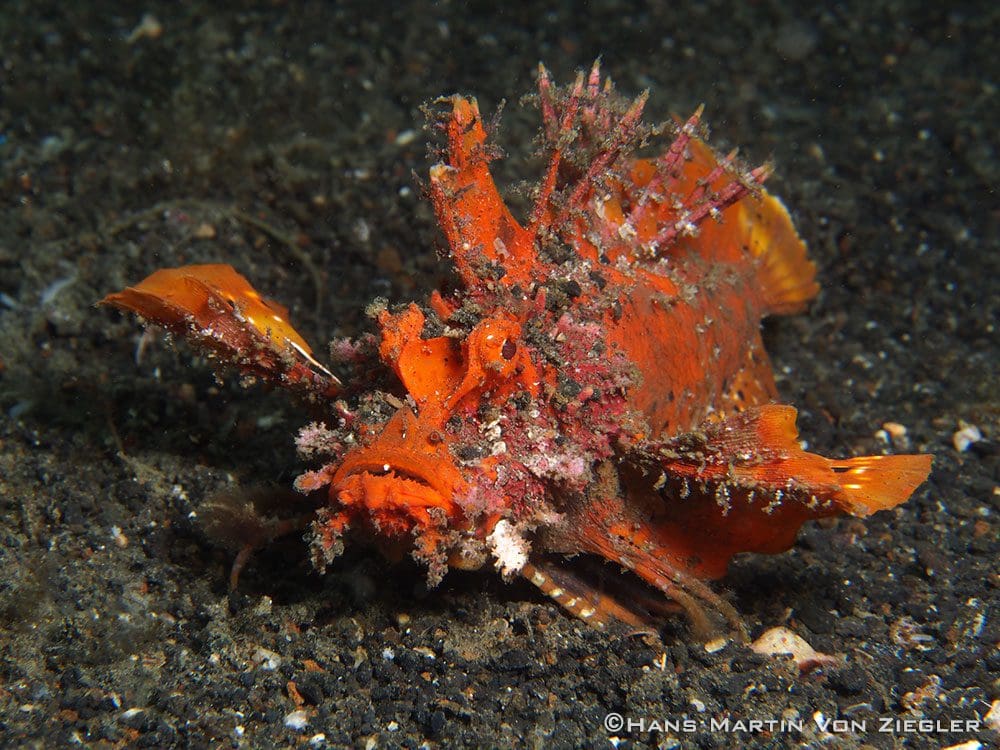
The devil scorpionfish’s most distinctive feature is undoubtedly its venomous spines. Located on its dorsal, anal, and pelvic fins, these spines serve as a formidable defense mechanism. If threatened or disturbed, the fish will raise its spines, presenting a warning to potential predators or intrusive underwater photographers!
Despite being well equipped with spines, devil scorpionfish are not an aggressive species and prefer to avoid confrontations. It uses its camouflage as its primary line of defense, relying on its ability to remain unseen rather than engaging in direct confrontation.
Devil Scorpionfish in Lembeh
Our unique environment here in Lembeh is characterized by volcanic sand and muck diving sites that provide the ideal habitat for the devil scorpionfish. Our combination of coral rubble, reef and sand sites offer ample hiding spots and camouflage options for these masters of disguise. The calm waters and relatively shallow depths of our dive sites provide a perfect setting for divers and photographers who want to observe and capture the beauty of this elusive critter.
Devil Scorpionfish as Underwater Photography Subjects
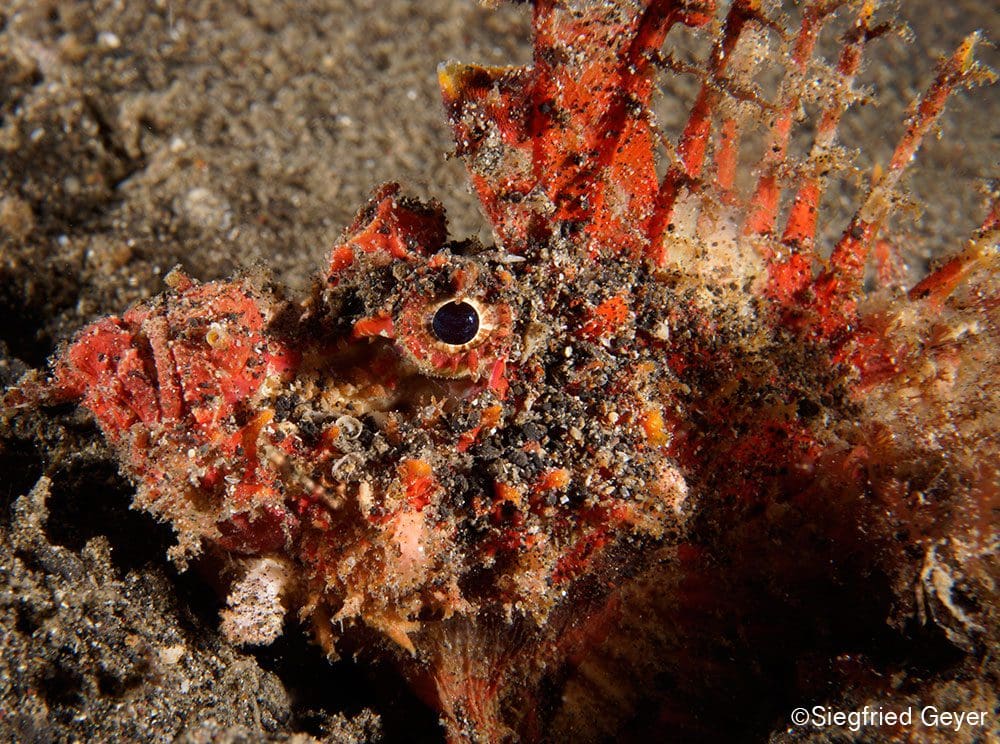
When attempting to photograph devil scorpionfish in Lembeh, keep in mind that they are a shy species so ensure that your initial approach is slow and avoid sudden or jerky movements. If you approach carefully and cautiously they will often allow for a close up encounter. Stay down close to the bottom as this is less threatening than towering over them.
As this species can measure up to 25 cm it can be challenging to capture the entire individual in focus but a solid image will have the eye as the main focal point.
If you would like more advice relating to your specific camera, lenses and lighting gear, call in to our Photo Center and speak to our team of Photo Center Assistants – they are always on hand to help and offer guidance. There is also a range of underwater photography equipment and accessories to rent and available for sale.
Conservation and Responsible Diving in the Lembeh Strait

As divers and nature enthusiasts, it is our responsibility to ensure the preservation of Lembeh’s delicate ecosystem. It is crucial to exercise caution and avoid touching or disturbing marine life, including devil scorpionfish. Responsible diving practices, such as maintaining a safe distance and refraining from intrusive behavior when taking photographs and/or video footage, can help protect these remarkable creatures and their fragile environment for future generations to appreciate.
Further Reading
If you enjoyed reading about Devil Scorpionfish, you may also be interested in some of our other marine life articles:


